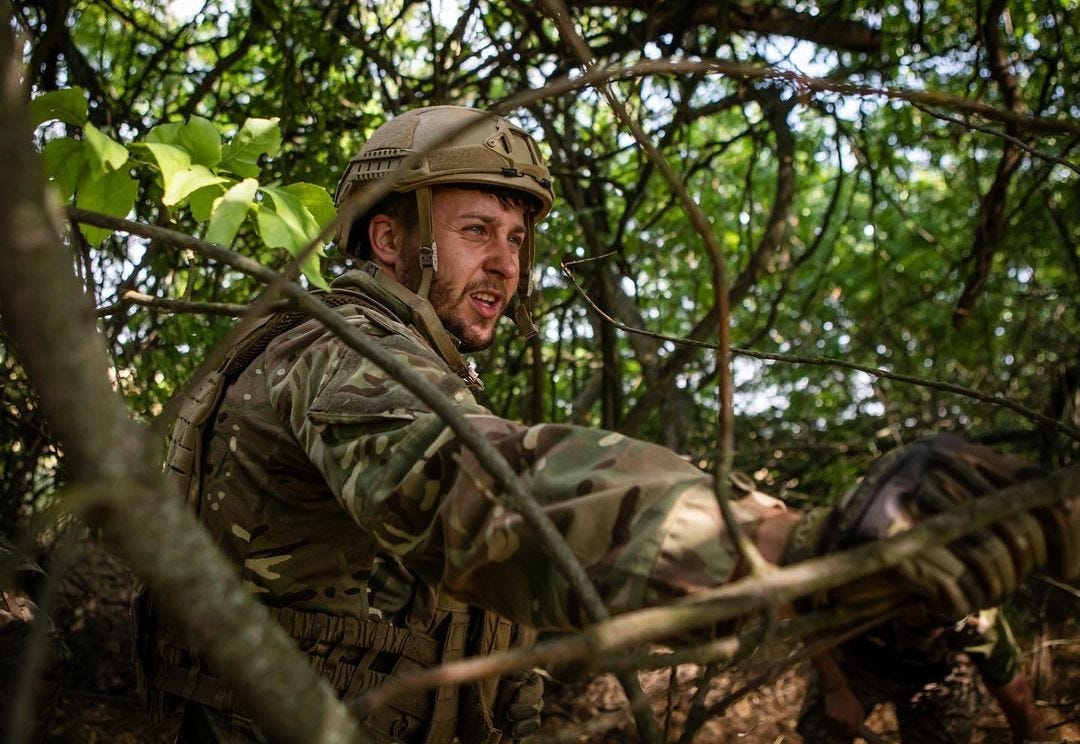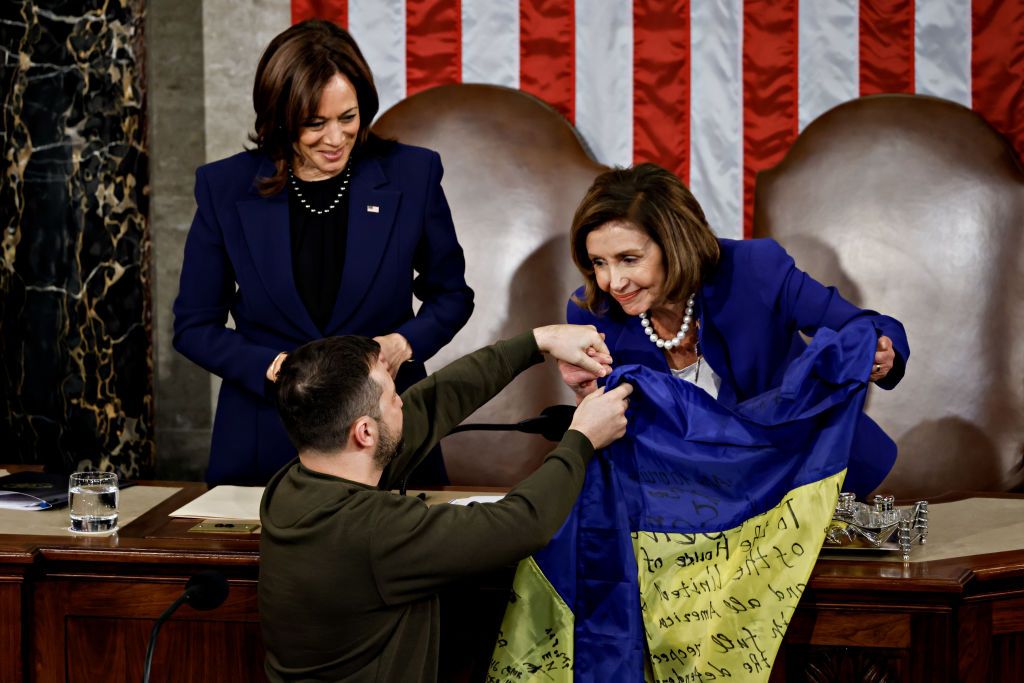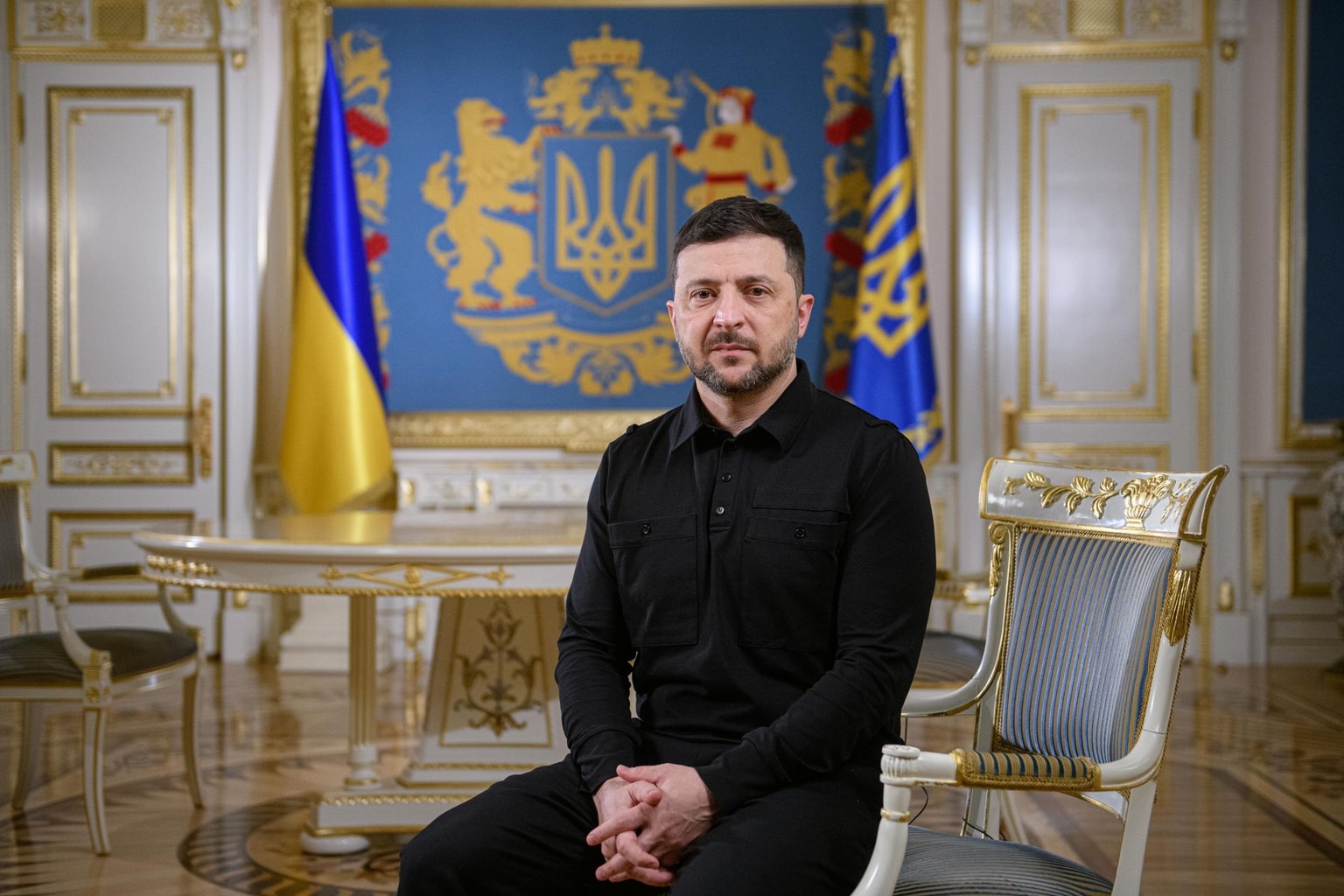
The Counteroffensive: Online weddings and missile tracking – how Ukraine's digital innovations thrive amid war
Amid the ongoing war, Ukraine's digital innovations — from online weddings to missile tracking — showcase the country's resilience and technological advancement.
Roman Lozynskyi (L) and Svitlana Kisilova (R) get married using the Diia app, making them the first couple in Ukraine to get married online in June 2024 (Roman Lozynskyi/Instagram).

Myroslava Tanska-Vikulova
Reporter at The Counteroffensive
Editor’s Note: This article was published by the twice-weekly newsletter “The Counteroffensive with Tim Mak” on Aug. 20, 2024, and has been re-published by the Kyiv Independent with permission. To subscribe to "The Counteroffensive," click here.

Imagine getting married anywhere in the world – not in a registry office or a church, but with just a smartphone and the Ukrainian app, Diia.
Roman Lozynskyi and Svitlana Kisilova became the first Ukrainian couple to marry online, thanks to Diia, an app originally designed to store citizens' personal documents like IDs, passports, and diplomas. Despite the challenges of war and a limited budget, Ukraine has emerged as a global leader in digital innovation.
Ukraine has pioneered many innovations with potential global impact, showcasing its ability to drive digital advancements. Since Russia's full-scale invasion began, Ukrainian programmers have worked to simplify everyday life for citizens, including streamlining marriage applications and the process itself.
Diia is the first app to allow online marriage. Beyond that, it helps Ukrainians update military registration details, track Russian attacks, and follow power outage schedules.
Roman, a member of the Ukrainian parliament from the Holos party, joined the military after the full-scale invasion began and has fought on the front line for over a year. He understands the challenges of marrying on the front, where soldiers fear dying before they can marry their partners.
Roman and Svitlana, a lecturer at the Ukrainian Catholic University, met in Canada during an internship in 2016. Roman proposed in September 2022 during a mountain vacation, but they postponed the wedding due to the full-scale invasion and the loss of close friends. By 2024, they wanted to share their wedding with loved ones and decided to marry via video call using Diia.
Their ceremony lasted 20 minutes, longer than usual due to internet issues and heavy rain. "The ceremony was very emotional and long-awaited... All the guests were rooting for the internet connection and the bride's signature (using Face ID)," Roman told The Counteroffensive.

On the first weekend Diia’s marriage service became available, three couples married online. Since then, 30,000 couples have registered, according to Digital Transformation Minister Mykhailo Fedorov. Once fully active, the service will eliminate the need for registry office visits, with a digital marriage certificate appearing directly in the app. A physical document can then be ordered for delivery by mail.
Ukraine’s digital innovations extend beyond Diia. The app Reserve+ was launched in May 2024 to help Ukrainians liable for military service quickly update their data without visiting recruitment centers. By mid-July 2024, over 2.7 million people had updated their information in the app, which also introduced digital military ID cards with the same legal authority as paper documents.
Another app, Kyiv Digital, launched in February 2021, has over 2.7 million users. It provides residents with air raid alerts, offline maps of shelters, and power outage schedules. Before each blackout, the app sends a notification 15 to 20 minutes in advance, and another one 5 to 10 minutes before power is restored.
Additionally, a Monitor channel on Telegram and Twitter provides real-time updates on the direction of Russian missile flights and military threats, using open-source intelligence (OSINT) data. The channel’s creator, who remains anonymous for security reasons, relies on a network of sources, including radio stations and ground contacts. He tracks enemy movements almost non-stop, especially after the devastating missile attack on Serhiivka, Odesa Oblast, in July 2022, when Russian X-22 missiles struck residential buildings too quickly for a warning.
“The idea of creating such a channel was born right at the beginning of the full-scale invasion, due to the lack of information about the threats to civilians,” the Monitor channel’s owner and founder told The Counteroffensive.
Each day, he taps into nearly a thousand different sources – monitoring up to 10 radio stations from morning to night and receiving updates from operational contacts. While he primarily works alone, he occasionally relies on a small team of specialists for research. The work is nearly continuous; he only rests when the skies are calm, with no planes or enemy drones flying along the front.
"War does not take a time out – that's why I don't have weekends or vacation. As long as Russia launches missiles, I am on duty," he said.
Ukraine’s IT sector, already advanced before the war, has flourished under pressure. In the early days of the full-scale invasion, security initiatives and mutual aid organizations rapidly formed through smartphones, helping with food aid and evacuations. Ukrainians have honed their digital expertise to resist external threats, demonstrating their ability to unite and innovate under duress.
Editor’s Note: The opinions expressed in the op-ed section are those of the authors and do not purport to reflect the views of the Kyiv Independent.












